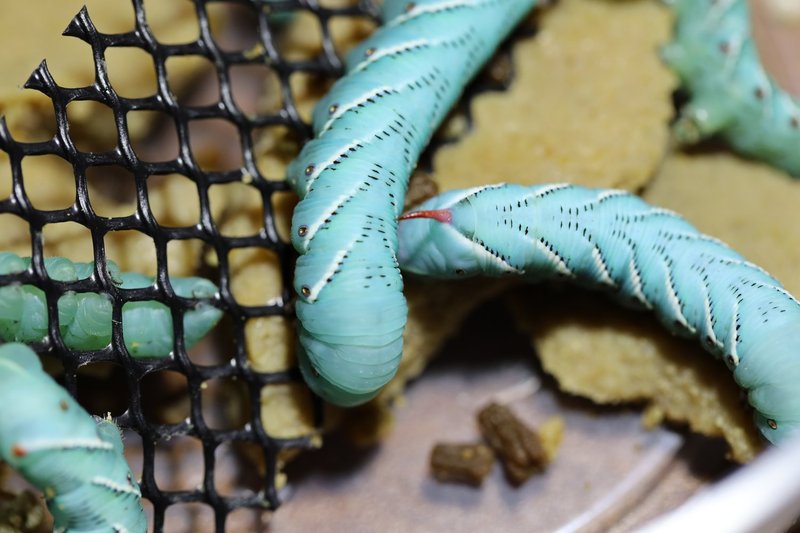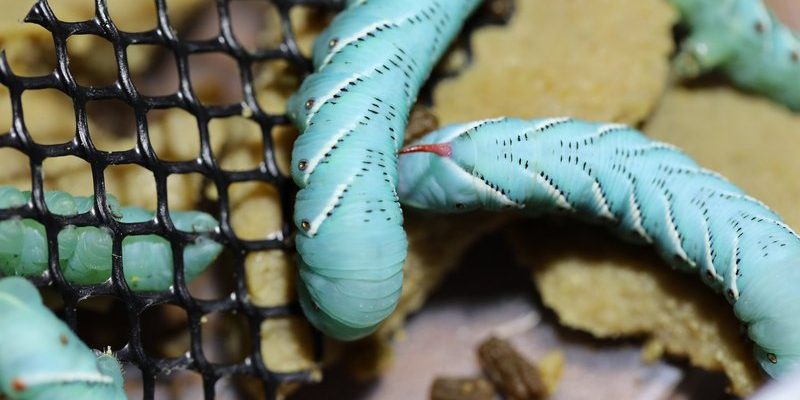
So, what makes hornworms so special? Think of them as the ultimate power-up for your pet. These little guys are packed with nutrients, making them a choice food for many species, especially reptiles. Plus, they’re easy to grow, even for beginners. By the end of this guide, you’ll feel confident about starting your own hornworm farm—yes, farm! And no, you won’t need a tractor.
What Are Hornworms?
Hornworms, specifically the *Manduca sexta* species, are the larvae of the Carolina sphinx moth. You may have seen pictures of these green caterpillars munching on plants. They can grow to about 4 inches long and have a distinctive horn-like projection on their rear, hence the name “hornworm.” They are primarily known for their voracious appetite and rapid growth, making them a popular choice among pet owners as feeder insects.
Hornworms are not just any old caterpillars; they are highly nutritious. They have a high moisture content and are packed with proteins, making them ideal for many reptiles, including bearded dragons and chameleons. Here’s the thing: if you’re raising pets that need a diet rich in protein and hydration, hornworms are a winner. Plus, they’re easy to digest, which means your pets can absorb the nutrients without any fuss.
Growing hornworms can be done in a small space, making them perfect for those without a lot of room. They don’t require fancy equipment—just some basic supplies and a little bit of your time. So, if you’re ready to dive into the world of insect farming, let’s get started!
Setting Up Your Hornworm Habitat
Creating the right environment for your hornworms is crucial. They thrive in a humid, warm atmosphere, similar to what their natural habitat would be. First, find a container that can hold them comfortably—think of something like a plastic tub or a small aquarium. Make sure it has enough height for them to grow; after all, you don’t want to give your worms a ceiling they can’t bypass.
Temperature and Humidity: Hornworms do best in temperatures between 75°F and 85°F (24°C to 29°C). You might want to invest in a small thermometer to keep an eye on the temperature. Humidity levels should be high, around 60-70%. You can achieve this by lightly misting the enclosure every day. But don’t go overboard! Excess moisture can lead to mold, which is a big no-no for your growing worms.
Ventilation is also important. Ensure that your container has holes for airflow, but not too big that your little hornworms can escape. Covering the lid with a breathable mesh can work wonders. Just remember, hornworms are like tiny Houdinis!
Feeding Your Hornworms
Feeding hornworms is one of the fun parts of raising them. They are mainly herbivores and love munching on nutritious greens. You can feed them things like:
- Stinging nettle
- Tomato leaves
- Eggplant leaves
- Commercial hornworm diet (available in stores)
When you first introduce food, start with a small amount and gradually increase it as they grow. The key is to offer fresh, chemical-free options—organic is always better. If you’re using commercially prepared feeds, make sure they are specifically designed for hornworms. Here’s the thing: cheap options might save a buck but can lead to unhealthy hornworms.
One of the perks of hornworms is their sizable appetites. For instance, they can eat approximately 10-15% of their body weight in food daily! You’ll witness a rapid growth transformation as they devour their greens, almost as if they’re on a mission. Just make sure to remove any uneaten food to avoid mold and pests.
Growing Conditions for Healthy Hornworms
To ensure your hornworms thrive, pay attention to their growing conditions. Besides temperature and humidity, the type of food and how you provide it can make a big difference. Hornworms like to hang out and munch, so they need space. If they are cramped, they won’t grow as well and may even try to escape.
Consider using a substrate at the bottom of your container. While hornworms won’t burrow like earthworms, a layer of paper towels or newspaper can help keep things clean and provide a surface that absorbs excess moisture. Keep the enclosure clean to minimize the risk of disease. You don’t want to end up with a sick batch because of some simple neglect.
If you notice your hornworms shedding their skin, that’s a good sign—they’re growing! Just keep an eye on them to ensure that shedding passes without any issues. This transformation is natural, and it signals that your care is paying off.
Common Problems and Troubleshooting
Even when you’re doing your best to raise healthy hornworms, things can go wrong. Here are some common problems and how to troubleshoot them.
1. High Mortality Rates: If you notice many worm casualties, check your temperature and humidity levels. Too high or too low can stress your hornworms and lead to death.
2. Mold Issues: If you see mold forming, it usually means there’s too much moisture. Lower the humidity by decreasing the misting frequency or improving ventilation.
3. Escape Artists: Hornworms can be surprisingly sneaky. If you find them roaming outside their habitat, it’s time to check for any holes in your container and cover them properly.
It’s also a good idea to keep the area around your worm farm clean. A little diligence can prevent many issues down the line. Paying attention to the health of your hornworms will reward you with a successful feeding venture.
Harvesting Your Hornworms
Once your hornworms reach the right size (around 3-4 inches), it’s time to harvest them for feeding! But how do you know when they’re ready? Look for plump, healthy worms; a good rule of thumb is to keep them well-fed and observe their growth.
When you’re ready to harvest, gently remove the worms from their habitat. You can feed them directly to your pets or store them for later. If you’re storing them, keep them in a cool place, ideally in a breathable container, to prevent them from pupating into moths.
Tip: If you want a higher yield from your hornworms, try splitting your batch into smaller containers once they’re large enough. This way, they can grow more efficiently and won’t compete for food.
Why Raising Hornworms Matters
You might be wondering why you should bother with raising hornworms at all. Well, beyond being a delicious treat for your pets, there’s a certain satisfaction that comes with nurturing living creatures. Watching them grow and knowing you’re providing quality nutrition is rewarding.
Plus, raising hornworms can save you money in the long run. Instead of buying pre-packaged feeder insects that may not always be fresh or healthy, you know exactly what your hornworms are eating. This control over their diet can lead to stronger, healthier pets.
Raising hornworms also means you can experiment with your pets’ diets. Make it a fun project to see how different kinds of food affect their health and vitality. You might uncover new favorites for your scaly friends!
So, there you have it! Raising hornworms as feeder insects can be an enjoyable and fulfilling hobby. You don’t need to be a seasoned farmer to do it; with just a little bit of effort and attention, you can provide nutritious food for your pets.
Remember to create a comfortable habitat, feed them well, and keep an eye on their growing conditions. With these tips, you’re well on your way to becoming a hornworm-raising pro. Happy farming, and may your pets thrive on their tasty new meals!

